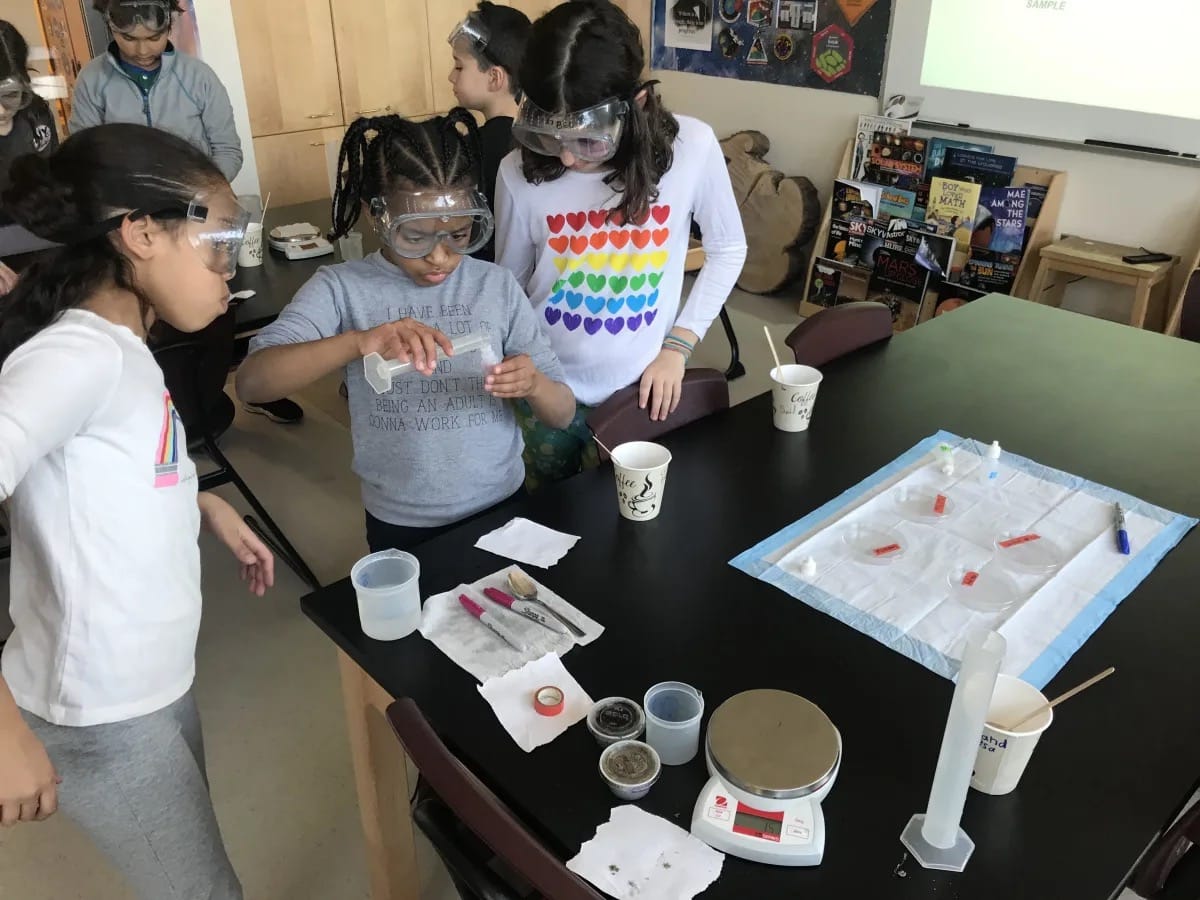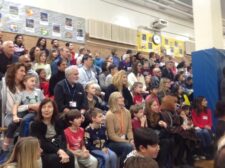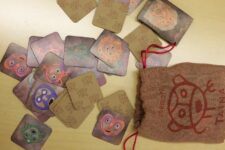On a bright July day at Cape Canaveral, Florida, a Falcon 9 rocket waits at the launch site. The energy is electric. Despite decades of space travel, the idea of leaving our atmosphere for the great beyond is still mind-boggling.
The countdown begins, and white smoke billows out of the rocket. As the clock hits zero, the ground begins to shake wildly as the spaceship thunders to life. The scaffolding falls away and the rocket takes off, dragging a column of fire behind it. It rises upward, high above Cape Canaveral and into the blue sky.
The rocket is part of the SpaceX CRS-18 mission. It will bring supplies and research materials to the astronauts orbiting Earth on the International Space Station — including a 10cm x 10cm x 20cm box containing an experiment designed by the Fieldston Lower Class of 2027.
The 4th Grade science curriculum at Fieldston Lower revolves around the needs of living things, says Fieldston Lower Math and Science Teacher Michael Wilkinson, and the students focus on farming in space as a means to further human exploration. Their conversation covers issues like nutrition, nutrient cycles and plants, and the physiology of humans.
Wilkinson saw a problem worth solving: you can’t farm in space like you can farm on Earth, and we’re going to need to produce food in space for explorations that go farther out than the Moon, like a mission to Mars. Farming on Earth often relies on nitrates and nitrites, which are too expensive to produce in space, or ammonia, which isn’t easily contained and would be lethal to astronauts. So to farm in space, we need a biological solution, Wilkinson says, to create nitrogen-rich soil for growth.
There’s an Earth-bound reason for exploring this process as well: Because of climate change, our conception of farming is changing. Humans are moving their crops closer to the poles in search of cooler climates, which ultimately isn’t sustainable. We’ll need to engineer ways to farm at higher temperatures — and a space experiment that deals with elevated lab temperatures might be a crucial puzzle piece to finding a solution.

Wilkinson wanted to find an answer. But as he researched, he came up short. Sure, there had been a few experiments during the space shuttle era, when they flew soybeans into the cosmos. But because the shuttle missions were limited to two weeks, the experiments couldn’t produce any conclusive results. As a NASA Master Teacher (a member of a program that provides training and community around teaching about NASA missions and research in the classroom) and longtime member of the space community, Wilkinson knew he’d need to run experiments on the International Space Station, which had longer missions.
So he put the problem to the 4th Graders, who promptly got to work. With help from the ExoLab, a mini-lab that gives students around the globe the chance to construct experiments that will be replicated on the International Space Station, they designed an experiment for investigating the symbiotic relationship between bacteria and legumes to see if they could produce legumes in a laboratory setting — and to see if the process could be replicated in microgravity.
While one version of their experiment was up in space, students at Fieldston Lower continued their research on their classroom ExoLab, running controlled experiments and comparing their results to those from the mini-lab on the International Space Station.
After a month on board the International Space Station, the cultures returned to Earth and now sit at a lab in Berkeley, CA, waiting to be RNA-sequenced, among other tests. The Class of 2027, now 5th Graders, will follow along with these tests as they gain the necessary skills and will be able to analyze the success of their experiment.

The work isn’t simply a school lesson — it’s original research being pursued as an academic study, Wilkinson says. He’s acting as the Principal Investigator, and last year’s 4th Graders will be listed as co-authors when the study is published, having helped design the entirety of the experiment and protocols for flight.
Wilkinson presented the students’ research at the International Space Station Research and Development Conference this summer. Especially gratifying was the presence of one of the two scientists who worked on the original space shuttle soybean experiments, who was “really excited” to see his work expanded and the possibility of getting answers.
The students were thrilled to be taking part in real academic research. “Once they realized that they were actually going to be published authors in a scientific paper, that was just incredibly exciting and really validating of their efforts,” Wilkinson says. And that involvement is indicative of Fieldston Lower’s 4th and 5th Grade science curriculum. “They are scientists. We’re not learning about science; they’re being scientists and learning how to set up investigations and run them and analyzing. It’s very empowering.” For the scientists in the Class of 2027, it was a once-in-a-lifetime experience to watch their work launch, become supersonic, and leave our planet behind.




